-
PESQUISA01/01/2017
Promoting oral care in the preschool child: effects of a playful learning intervention
Revista Brasileira de Enfermagem. 2017;70(3):519-525
Resumen
PESQUISAPromoting oral care in the preschool child: effects of a playful learning intervention
Revista Brasileira de Enfermagem. 2017;70(3):519-525
DOI 10.1590/0034-7167-2016-0237
Visualizações0Ver maisABSTRACT
Objective:
To compare the number of appropriate behaviors for tooth brushing before and after a playful learning intervention with preschool children.
Method:
A quasi-experimental, quantitative, before and after study design was conducted in an early childhood educational institution, with children between three and five years of age. The intervention consisted of three meetings with educational activities about tooth brushing, whose outcome was evaluated by means of observation of ten behaviors suitable for tooth brushing.
Results:
Forty-four children participated in the study. The mean of adequate behaviors was 4.4 before the intervention, and 8.5 after the intervention. A significant increase in the adoption of appropriate behaviors for tooth brushing (p <0.01) was identified.
Conclusion:
Nurses can enhance oral health promotion actions with preschoolers in preschool institution using playful learning interventions
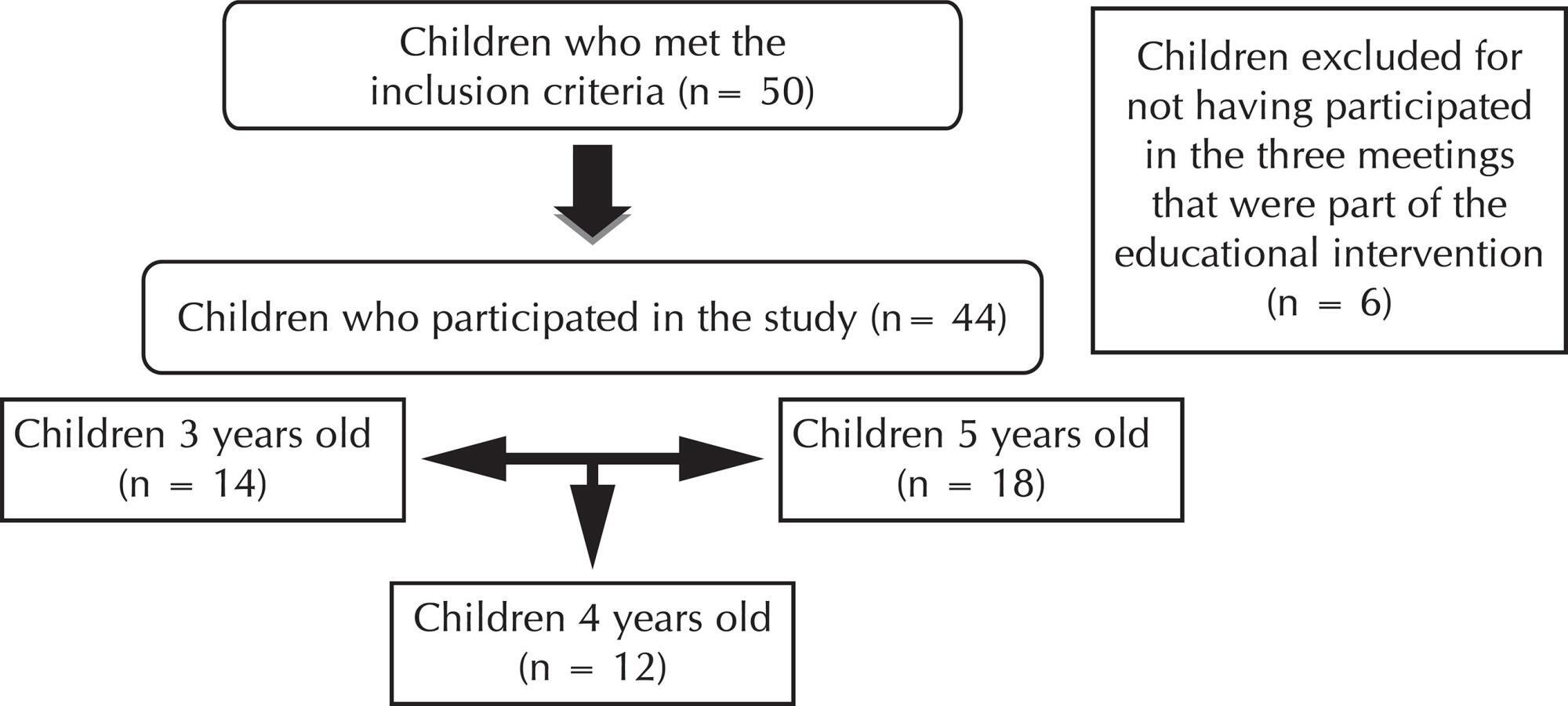
-
PESQUISA01/01/2017
Violence against children and adolescents: the perspective of Primary Health Care
Revista Brasileira de Enfermagem. 2017;70(3):511-518
Resumen
PESQUISAViolence against children and adolescents: the perspective of Primary Health Care
Revista Brasileira de Enfermagem. 2017;70(3):511-518
DOI 10.1590/0034-7167-2016-0471
Visualizações0Ver maisABSTRACT
Objective:
To analyze the care provided by Basic Health Units (BHU) to families involved in domestic intrafamily violence against children and adolescents.
Method:
Qualitative research, based on the Paradigm of Complexity. Data collection was performed with 41 professionals through focus groups and semi-structured interviews.
Results:
The following categories emerged from data analysis: ‘Everything comes here’, which reflects the legitimate place of BHUs for the population and the actions taken to build care for families; and ‘We only do what is really necessary’, which brings the look to violence still based on the positivist and biomedical paradigm.
Final considerations:
The model of understanding and construction of work processes in the BHU is structured in the aforementioned paradigm. Nurses have the possibility to become agents of change, both in professionals’ training and in the care thought and provided to communities.
-
PESQUISA01/01/2017
Integrality of care: challenges for the nurse practice
Revista Brasileira de Enfermagem. 2017;70(3):504-510
Resumen
PESQUISAIntegrality of care: challenges for the nurse practice
Revista Brasileira de Enfermagem. 2017;70(3):504-510
DOI 10.1590/0034-7167-2016-0380
Visualizações0Ver maisABSTRACT
Objective:
to understand the role of the nurse in the collegiate management model of a teaching hospital, in the integrality of care perspective.
Method:
a single case study with multiple units of analysis, with the theoretical proposition «integrality of care is a result of the care offered to the user by multiple professionals, including the nurse». Data were obtained in a functional unit of a teaching hospital through interviews with 13 nurses in a non-participant observation and document analysis.
Results:
from the analytical categories emerged subcategories that allowed understanding that the nurse promotes integrality of care through nursing management, team work and integration of services.
Final considerations:
the theoretical proposition was confirmed and it was verified that the nursing management focus on attending to health care needs and is a strategy to provide integrality of care.
-
PESQUISA01/01/2017
Low completion rate of hepatitis B vaccination in female sex workers
Revista Brasileira de Enfermagem. 2017;70(3):489-494
Resumen
PESQUISALow completion rate of hepatitis B vaccination in female sex workers
Revista Brasileira de Enfermagem. 2017;70(3):489-494
DOI 10.1590/0034-7167-2016-0567
Visualizações0Ver maisABSTRACT
Objective:
to assess predictive factors for noncompletion of the hepatitis B vaccination schedule in female sex workers in the city of Teresina, Northeastern Brazil.
Method:
402 women were interviewed and, for those who did not wish to visit specialized sites, or did not know their hepatitis B vaccination status, the vaccine was offered at their workplaces. Bi- and multivariate analyses were performed to identify potential predictors for noncompletion of the vaccination schedule.
Results:
of the 284 women eligible for vaccination, 258 (90.8%) received the second dose, 157/258 (60.8%) and 68/258 (26.3%) received the second and third doses, respectively. Working at clubs and consuming illicit drugs were predictors for noncompletion of the vaccination schedule.
Conclusion:
the high acceptability of the vaccine’s first dose, associated with low completion rates of the vaccination schedule in sex workers, shows the need for more persuasive strategies that go beyond offering the vaccine at their workplaces.
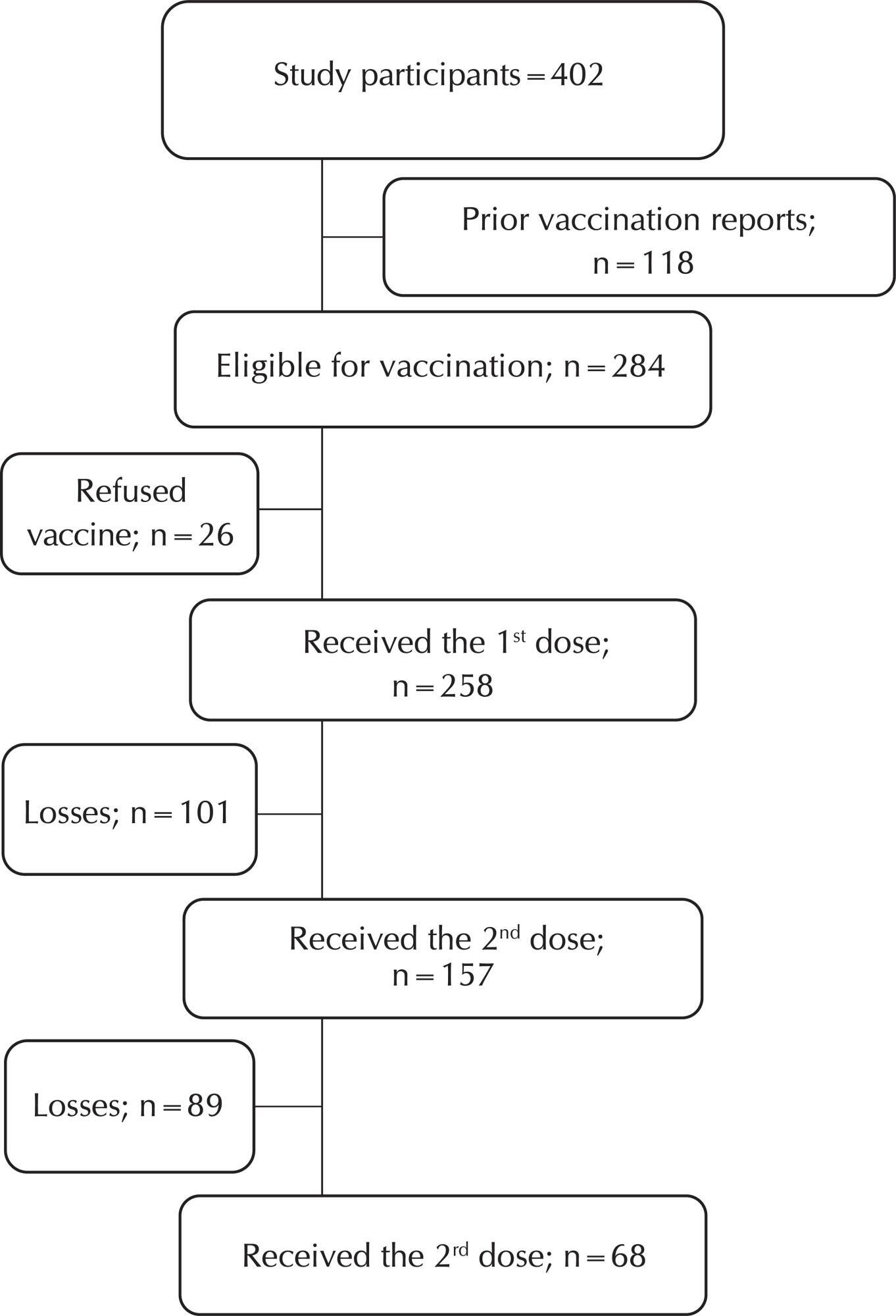
-
PESQUISA01/01/2017
Cost of nursing most frequent procedures performed on severely burned patients
Revista Brasileira de Enfermagem. 2017;70(3):481-488
Resumen
PESQUISACost of nursing most frequent procedures performed on severely burned patients
Revista Brasileira de Enfermagem. 2017;70(3):481-488
DOI 10.1590/0034-7167-2015-0034
Visualizações0Ver maisABSTRACT
Objective:
to identify the mean direct cost (MDC) of the most frequent procedures performed by nursing professionals on severely burned patients in an Intensive Care Unit.
Method:
exploratory-descriptive quantitative single-case study. The MDC was calculated by multiplying time (timed) spent by nursing professionals in the performance of the procedures by the unit cost of direct labor, and adding the costs of material and medicine/solutions.
Results:
a MDC of US$ 0.65 (SD=0.36) was obtained for «vital signs monitoring»; US$ 10.00 (SD=24.23) for «intravenous drug administration»; US$ 5.90 (SD=2.75) for «measurement of diuresis»; US$ 0.93 (SD=0.42) for «capillary blood glucose monitoring»; and US$ 99.75 (SD=129.55) for «bandaging».
Conclusion:
the knowledge developed can support managerial decision-making, contribute to the efficiency distribution of the resources involved and, when possible, provide cost-containment or cost-minimization strategies without impairing the quality of nursing care.
-
PESQUISA01/01/2017
Nursing Activities Score and Acute Kidney Injury
Revista Brasileira de Enfermagem. 2017;70(3):475-480
Resumen
PESQUISANursing Activities Score and Acute Kidney Injury
Revista Brasileira de Enfermagem. 2017;70(3):475-480
DOI 10.1590/0034-7167-2016-0266
Visualizações0Ver maisABSTRACT
Objective:
to evaluate the nursing workload in intensive care patients with acute kidney injury (AKI).
Method:
A quantitative study, conducted in an intensive care unit, from April to August of 2015. The Nursing Activities Score (NAS) and Kidney Disease Improving Global Outcomes (KDIGO) were used to measure nursing workload and to classify the stage of AKI, respectively.
Results:
A total of 190 patients were included. Patients who developed AKI (44.2%) had higher NAS when compared to those without AKI (43.7% vs 40.7%), p <0.001. Patients with stage 1, 2 and 3 AKI showed higher NAS than those without AKI. A relationship was identified between stage 2 and 3 with those without AKI (p = 0.002 and p <0.001).
Conclusion:
The NAS was associated with the presence of AKI, the score increased with the progression of the stages, and it was associated with AKI, stage 2 and 3.
-
PESQUISA01/01/2017
Nursing appointment and cardiometabolic control of diabetics: a randomized clinical trial
Revista Brasileira de Enfermagem. 2017;70(3):468-474
Resumen
PESQUISANursing appointment and cardiometabolic control of diabetics: a randomized clinical trial
Revista Brasileira de Enfermagem. 2017;70(3):468-474
DOI 10.1590/0034-7167-2016-0352
Visualizações0Ver maisABSTRACT
Objective:
to verify the effect of nursing appointment on cardiometabolic profile of people with Diabetes Mellitus type 2.
Method:
randomized controlled trial, developed with 134 individuals chosen for two groups: intervention and control. The intervention consisted of three nursing appointments alternated bimonthly, with two phone calls, over five months. The control group received usual care offered by the Health Unit. Data were collected through semi-structured interviews before and after the intervention, in addition to conducting laboratory tests.
Results:
after the intervention, a significant difference was shown in the amount of glycated hemoglobin (p = 0.006) and in the systolic blood pressure (p = 0.031), which were higher in the control group.
Conclusion:
besides being low-cost and easy to develop on the monitoring routine of people with diabetes, the intervention performed influenced positively the biochemical profile.
-
PESQUISA01/01/2017
Terms of the specialized nursing language for the care of ostomates
Revista Brasileira de Enfermagem. 2017;70(3):461-467
Resumen
PESQUISATerms of the specialized nursing language for the care of ostomates
Revista Brasileira de Enfermagem. 2017;70(3):461-467
DOI 10.1590/0034-7167-2015-0058
Visualizações0Ver maisABSTRACT
Objectives:
to identify terms of the specialized nursing language for the care of ostomates from the literature of the area, and to map the identified terms with terms of the International Classification for Nursing Practice (ICNP®).
Method:
descriptive study of quantitative approach guided by the guidelines for the elaboration of terminology subsets of the ICNP®. The terms were collected in 49 scientific articles, extracted using a computational tool, selected according to the relevance for the theme, and normalized and mapped with the ICNP®.
Results:
20,668 terms were extracted. The standardization process resulted in 425 relevant terms (151 were constant in ICNP® and 274 were not contained in ICNP®), of which 154 were similar, 19 were more comprehensive, 50 were more restricted, and 51 were not in concordance.
Conclusion:
the use of standardized language can minimize the ambiguities and redundancies identified in the mapping. The existence of terms not in concordance with the ICNP® reinforces the need for constant updating of this classification.
-
ARTÍCULO ORIGINAL17/02/2020
Social network of children with cronic disease: knowledge and practice of nursing
Revista Brasileira de Enfermagem. 2020;73(2):e20180371
Resumen
ARTÍCULO ORIGINALSocial network of children with cronic disease: knowledge and practice of nursing
Revista Brasileira de Enfermagem. 2020;73(2):e20180371
DOI 10.1590/0034-7167-2018-0371
Visualizações0Ver maisABSTRACT
Objectives:
To identify the knowledge and practice of primary care nurses about the social network approach for families of children with chronic diseases.
Methods:
Qualitative research, conducted by means of interviews with 23 family health nurses, from one municipality in Paraíba and one in Rio de Janeiro, from June to July of 2017. The data were interpreted using thematic analysis.
Results:
Social network meant institutional support offered by services outside the unit, and socioeconomic problems involved the family context. In practice, nurses find it difficult to provide comprehensive care and establish ties with families. When referring to other professionals, a weakness in the counter-referral to the family health unit is found.
Final considerations:
Some gaps were found regarding the knowledge and practice of nurses regarding the social network approach, which requires professional training to strengthen social relationships and the necessary support for families of children with chronic diseases.
-
ARTÍCULO DE REVISIÓN14/07/2021
Teoria de manejo de sintomas aplicada ao cuidado de enfermagem: scoping review
Revista Brasileira de Enfermagem. 2021;74(3):e20201004
Resumen
ARTÍCULO DE REVISIÓNTeoria de manejo de sintomas aplicada ao cuidado de enfermagem: scoping review
Revista Brasileira de Enfermagem. 2021;74(3):e20201004
DOI 10.1590/0034-7167-2020-1004
Visualizações0RESUMO
Objetivos:
identificar publicações acerca da aplicabilidade da Teoria de Manejo de Sintomas no cuidado de enfermagem a pacientes pediátricos, adolescentes, adultos e idosos.
Métodos:
scoping review seguindo as etapas: definição do objetivo, pergunta de pesquisa e critérios de inclusão; busca, seleção e análise das publicações; síntese dos resultados. A busca ocorreu nas bases BVS, SciELO, Portal de Periódicos CAPES e PubMed, contemplando publicações entre 1994 e julho de 2020.
Resultados:
de 3.286 estudos, 10 foram selecionados, publicados entre 2008 e 2019. Descreveram as relações entre os participantes e os domínios (pessoa, ambiente, saúde e doença), componentes (experiência de sintomas, estratégias de manejo, resultados) e apresentaram estratégias para o manejo dos sintomas.
Conclusões:
a Teoria de Manejo de Sintomas foi considerada aplicável aos participantes dos estudos e ao cuidado de enfermagem. Concluiu-se que compreender a interação desses elementos é essencial para planejar ações voltadas ao controle dos sintomas de forma eficaz.
Palavras-chave: Avaliação de SintomasCuidado de EnfermagemRevisãoSinais e SintomasTeoria de EnfermagemVer mais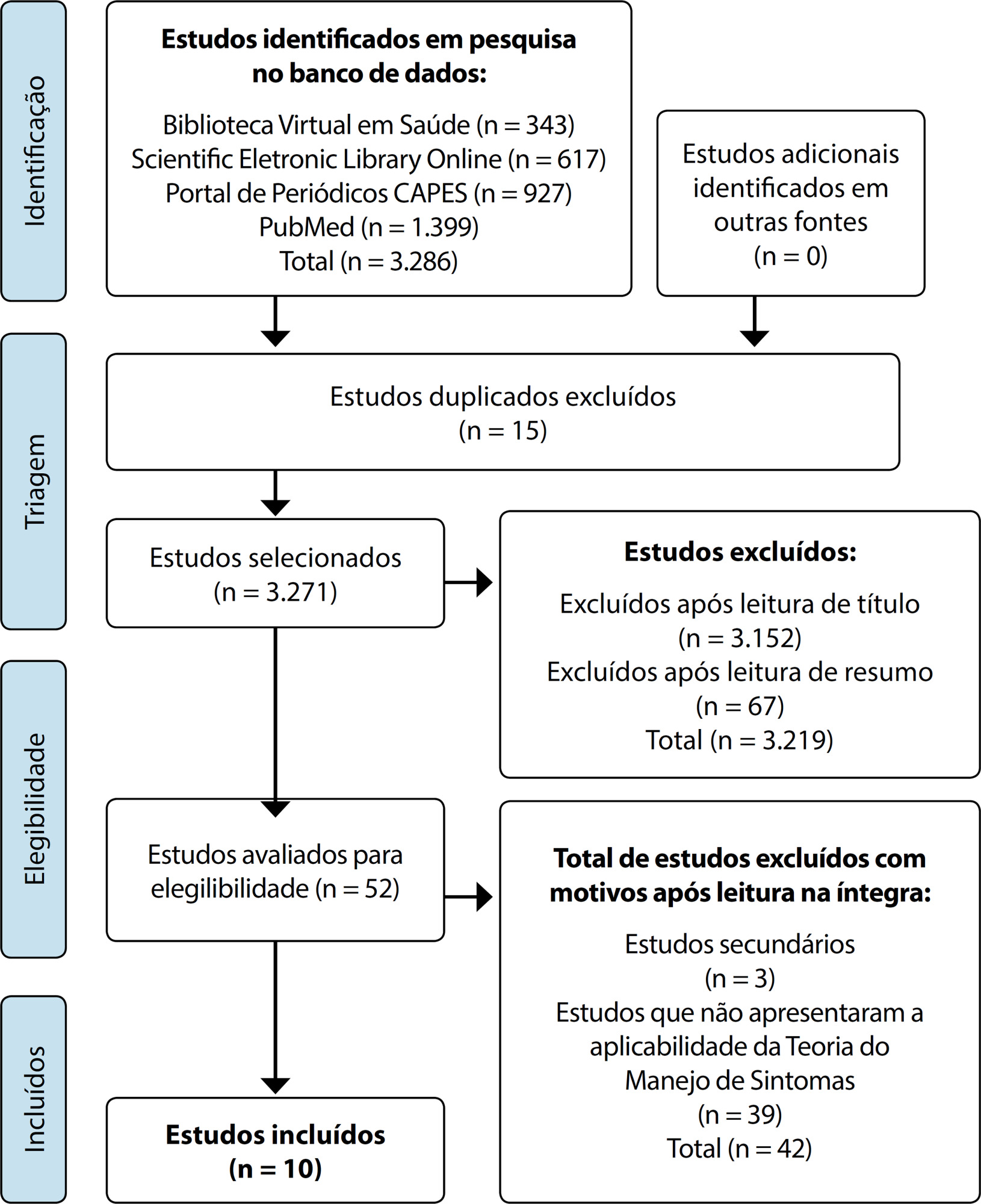
-
ARTÍCULO ORIGINAL28/10/2020
Conflict management strategies used by Portuguese nurse managers
Revista Brasileira de Enfermagem. 2020;73:e20190336
Resumen
ARTÍCULO ORIGINALConflict management strategies used by Portuguese nurse managers
Revista Brasileira de Enfermagem. 2020;73:e20190336
DOI 10.1590/0034-7167-2019-0336
Visualizações0Ver maisABSTRACT
Objectives:
to analyze the perception and conflict management strategies used by nurses in the management of people in Portuguese health services.
Methods:
descriptive, correlational study, carried out in Portuguese health services, with an intentional non-probabilistic sample, totaling 95 nurse managers. A questionnaire and Conflict Management Scale were used, analyzing the variables of managerial activities and conflict management, with the aid of software.
Results:
it was identified that 60% of the managers, report having to mediate conflicts daily, and the majority report adopting dialogue in conduct. However, through the Kruskal-Wallis test, it was shown that enforcement strategies in conflict management prevail (p = 0.008), with collaborative ones being more restricted to monthly intervals (p = 0.049).
Conclusions:
managers perceive the importance of collaboration in the mediation of conflicts, however, in their daily lives; they tend to maintain imposing behaviors, signaling for a little transformational leadership style.
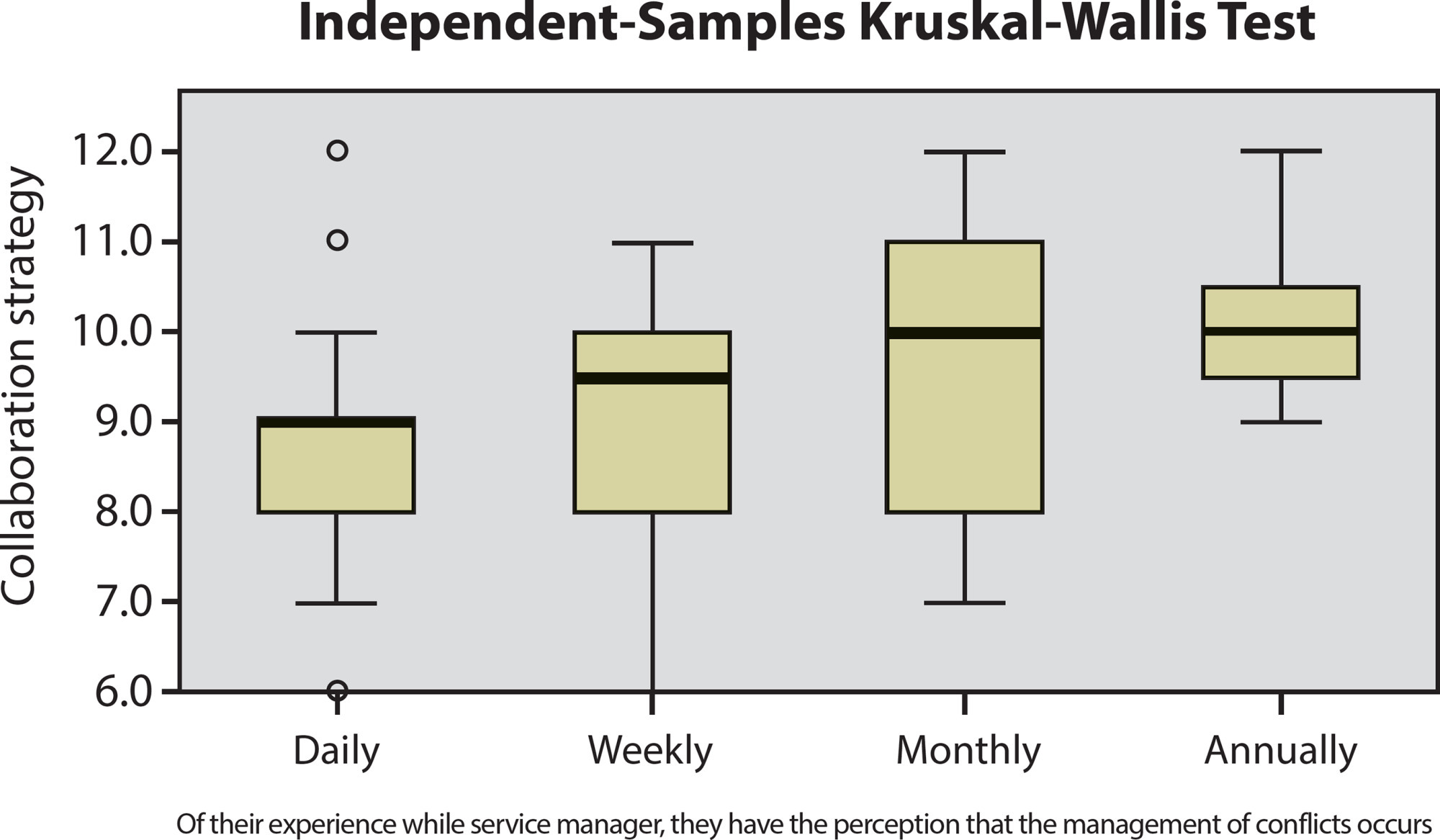
-
ARTÍCULO ORIGINAL18/05/2020
Avaliação por especialistas do curso online “Programa de Avaliação da Dor Neonatal”
Revista Brasileira de Enfermagem. 2020;73(4):e20180392
Resumen
ARTÍCULO ORIGINALAvaliação por especialistas do curso online “Programa de Avaliação da Dor Neonatal”
Revista Brasileira de Enfermagem. 2020;73(4):e20180392
DOI 10.1590/0034-7167-2018-0392
Visualizações2RESUMO
Objetivos:
avaliar a qualidade do layout, da identidade visual e do conteúdo do curso online “Programa de Avaliação da Dor Neonatal”.
Métodos:
estudo exploratório descritivo. O curso foi avaliado por 24 especialistas nas áreas de dor, neonatologia e educação. Foi utilizado um formulário contendo 20 questões sobre aspectos técnicos, de interface e educacionais. Para cada item, a pontuação variou de 0 a 1. Escores médios acima de 0,7 foram considerados indicativos de alta qualidade dos itens. Utilizou-se estatística descritiva para análise dos dados.
Resultados:
foram avaliados: navegação livre, clareza, facilidade de localização, pertinência do conteúdo, contextualização, correção de conteúdo, múltiplas janelas, facilidade de aprendizagem, eficiência de utilização, facilidade de retorno, ergonomia, estética, marcas especiais, recursos audiovisuais, informações e portabilidade. Todos os aspectos obtiveram média ≥ 0,70, não sendo necessárias modificações.
Conclusões:
considera-se o Programa de Avaliação da Dor Neonatal como tecnologia educacional de qualidade e estratégia promissora para a educação em saúde.
Palavras-chave: Avaliação da DorEducação a DistânciaEnfermagem NeonatalRecém-NascidoTecnologia EducacionalVer mais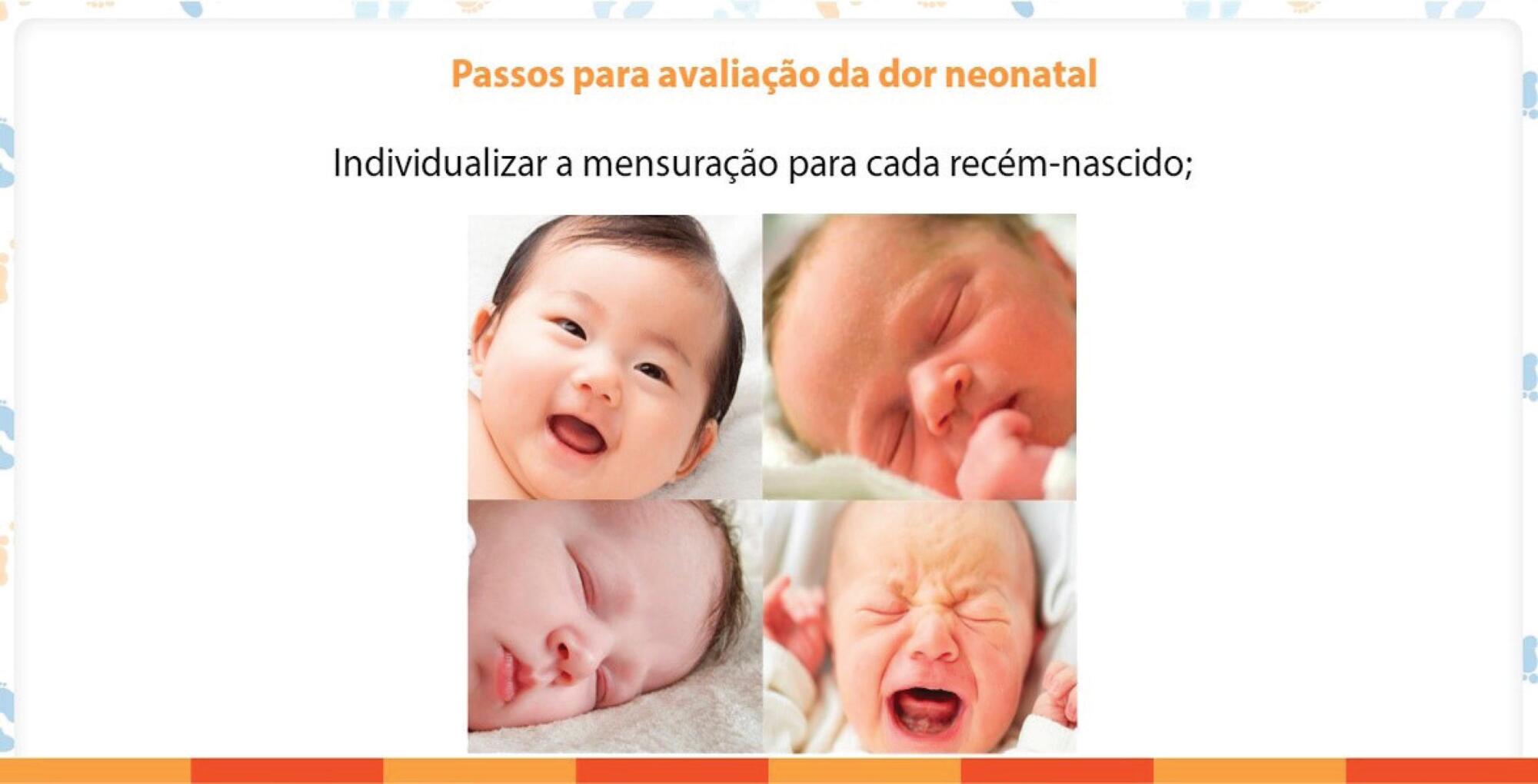
-
ARTÍCULO ORIGINAL09/05/2022
Fatores associados às competências do cuidador informal na assistência domiciliar
Revista Brasileira de Enfermagem. 2022;75(4):e20210744
Resumen
ARTÍCULO ORIGINALFatores associados às competências do cuidador informal na assistência domiciliar
Revista Brasileira de Enfermagem. 2022;75(4):e20210744
DOI 10.1590/0034-7167-2021-0744
Visualizações1Ver maisRESUMO
Objetivo:
Identificar os fatores associados às competências cognitivas, emocionais, psicomotoras e relacionais do cuidador informal na assistência domiciliar.
Métodos:
Estudo transversal, realizado com amostra de 216 cuidadores informais, residentes em município do estado do Paraná. A coleta de dados ocorreu entre fevereiro e julho de 2019, com instrumento desenvolvido e validado para avaliação das competências do cuidador informal. Utilizou-se análise descritiva e inferencial para tratamento das variáveis.
Resultados:
Os fatores associados a maior competência do cuidador informal foram sexo feminino, ter capacitação e mais de cinco anos em assistência domiciliar. A menor competência foi observada nos cuidadores que apresentavam problema de saúde e pertenciam aos menores extratos do poder de compra familiar. Os participantes tiveram menores índices na competência psicomotora e obtiveram melhores resultados na cognitiva.
Conclusão:
Identificou-se que mulheres com experiência no cuidado tiveram maiores níveis de competência para realizar uma assistência de qualidade no domicílio.
-
09/03/2020
Ensino de Enfermagem Psiquiátrica e Saúde Mental face aos currículos brasileiros
Revista Brasileira de Enfermagem. 2020;73(2):e20180200
Resumen
Ensino de Enfermagem Psiquiátrica e Saúde Mental face aos currículos brasileiros
Revista Brasileira de Enfermagem. 2020;73(2):e20180200
DOI 10.1590/0034-7167-2018-0200
Visualizações0Ver maisRESUMO
Objetivos:
conhecer a produção científica sobre o ensino de Enfermagem Psiquiátrica e Saúde Mental face aos currículos brasileiros de enfermagem.
Métodos:
Revisão Integrativa de Literatura sem delineamento temporal, cuja coleta de dados ocorreu em dez bases de dados nacionais e internacionais, somando-se ao total 35 objetos de análise.
Resultados:
adotaram-se categorias apriorísticas, consistindo no ensino de Enfermagem Psiquiátrica e Saúde Mental no Brasil conforme os currículos de enfermagem dos anos de 1923, 1949, 1962, 1972, 1994 e 2001, apresentados à luz das dimensões: modelo de pensamento; locais de prática; métodos ou conteúdos utilizados; e, perfil ou competências do discente.
Considerações finais:
o estudo possibilitou observar a evolução histórica do ensino de Enfermagem Psiquiátrica e Saúde Mental, indicando que as transformações do ensino envolveram mudanças curriculares, na Reforma Psiquiátrica e no modo como os cursos e escolas de graduação em Enfermagem se apropriam destes determinantes.
-
INFORME DE EXPERIENCIA19/08/2019
Modelo PILSET: aconselhamento sexual para sobreviventes do câncer de mama
Revista Brasileira de Enfermagem. 2019;72(4):1109-1113
Resumen
INFORME DE EXPERIENCIAModelo PILSET: aconselhamento sexual para sobreviventes do câncer de mama
Revista Brasileira de Enfermagem. 2019;72(4):1109-1113
DOI 10.1590/0034-7167-2018-0525
Visualizações0Ver maisRESUMO
Objetivo:
Relatar a experiência do uso do modelo PILSET como ferramenta de cuidado de enfermagem para sobreviventes de câncer de mama com disfunção sexual.
Método:
relato de experiência desenvolvido de janeiro a agosto de 2017, realizado no ambulatório de mastologia em conjunto com o serviço de sexualidade de uma maternidade-escola de Fortaleza, Ceará, Brasil, com 15 sobreviventes de câncer de mama.
Resultados:
realizaram-se sessões de aconselhamento sexual, utilizando o modelo PILSET para trabalhar questões sexuais, destacando as particularidades da mulher que vivencia a sobrevida após o tratamento de câncer de mama.
Considerações finais:
o modelo utilizado na prática de cuidado de enfermagem é usual e permite identificar questões vivenciadas pela mulher, pois é uma ferramenta de fácil disponibilidade e praticidade para profissionais de enfermagem, auxiliando abordar questões sexuais com maior tranquilidade.
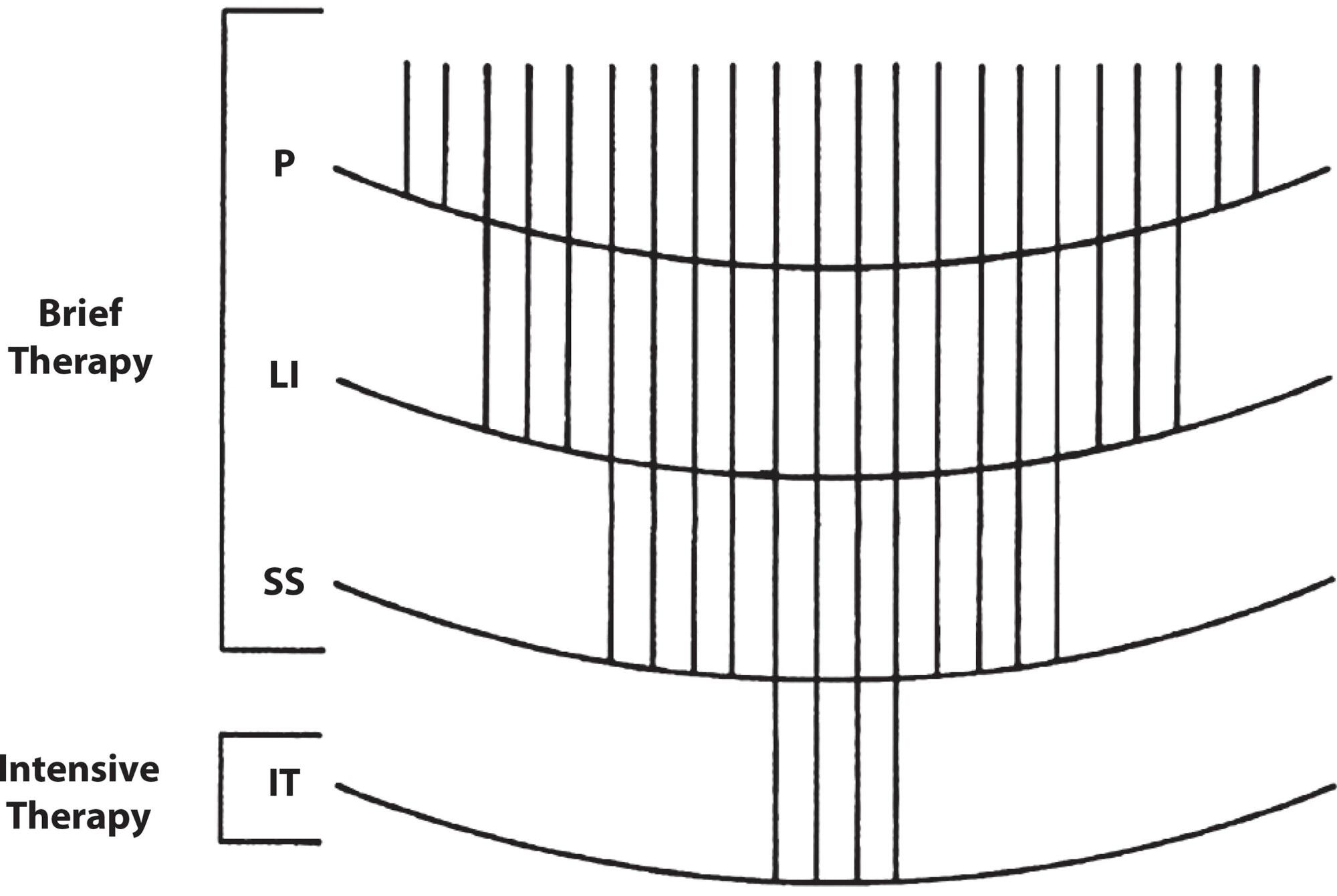
-
ARTÍCULO ORIGINAL16/09/2019
Saberes de estudantes de enfermagem sobre a prevenção de Infecções Sexualmente Transmissíveis
Revista Brasileira de Enfermagem. 2019;72(5):1145-1152
Resumen
ARTÍCULO ORIGINALSaberes de estudantes de enfermagem sobre a prevenção de Infecções Sexualmente Transmissíveis
Revista Brasileira de Enfermagem. 2019;72(5):1145-1152
DOI 10.1590/0034-7167-2017-0801
Visualizações0RESUMO
Objetivo:
Identificar o conhecimento e ações de autocuidado tomadas por estudantes de graduação em Enfermagem de uma Universidade Federal do Sul do Brasil, frente às Infecções Sexualmente Transmissíveis.
Método:
Estudo qualitativo exploratório, realizado 40 entrevistas com estudantes de graduação do início e do final do curso. A análise foi temática, resultando em três categorias.
Resultados:
O conhecimento acerca da temática é um fator decisivo para o autocuidado, sendo que quanto mais conhecimento, maior a prevenção. A disseminação de conhecimentos dos estudantes de final do curso não só influenciam no autocuidado como também na promoção de saúde no âmbito social.
Considerações finais:
O conhecimento é importante no autocuidado e no cuidado ao próximo. A disseminação de conhecimento se torna evidente conforme a complexidade do curso. Os relacionamentos estáveis podem interferir no uso ou desuso dos preservativos nas relações sexuais, equivoco presente na sociedade atual.
Palavras-chave: AutocuidadConhecimentDoenças Sexualmente TransmissíveiEstudantes de EnfermagemPrevenção de DoençaVer mais
Búsqueda
Buscar en:
Nuvem de Tags
Adolescente (85) Atenção Primária à Saúde (239) COVID-19 (91) Criança (91) Cuidados de Enfermagem (269) Educação em Enfermagem (151) Educação em Saúde (139) Enfermagem (930) Enfermagem Pediátrica (86) Estudantes de Enfermagem (77) Estudos de Validação (131) Família (87) Idoso (208) Promoção da Saúde (99) Qualidade de Vida (104) Saúde do Trabalhador (86) Saúde Mental (145) Saúde Pública (82) Segurança do Paciente (150) Tecnologia Educacional (100)



